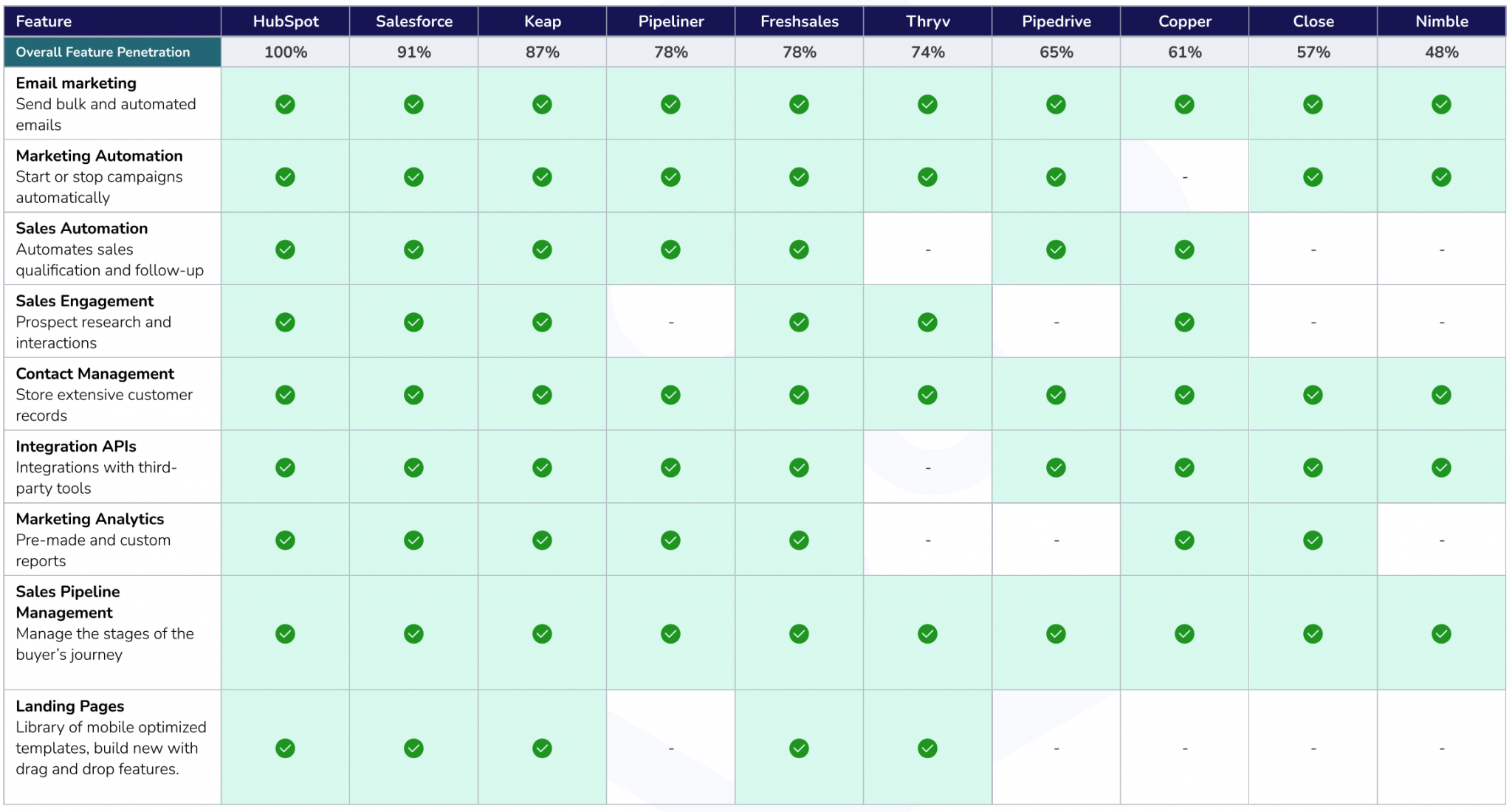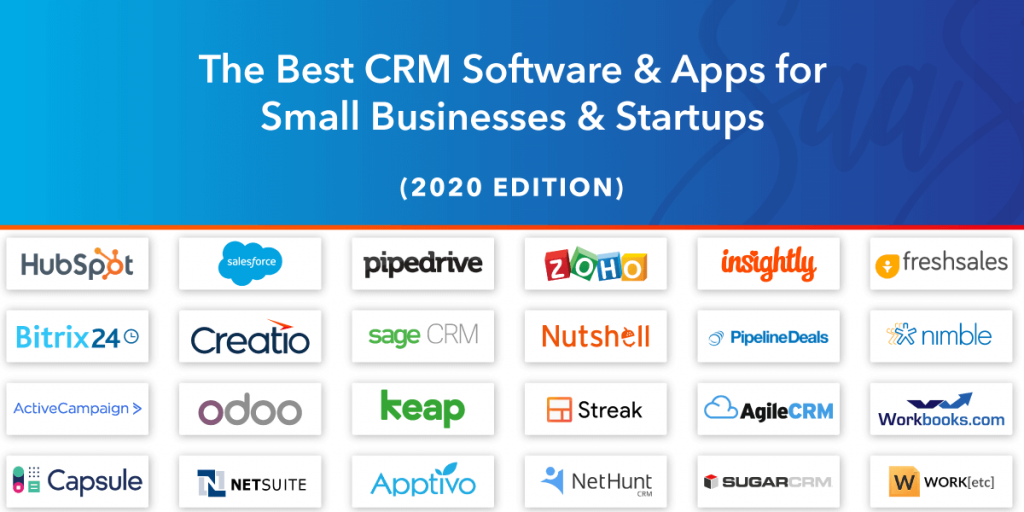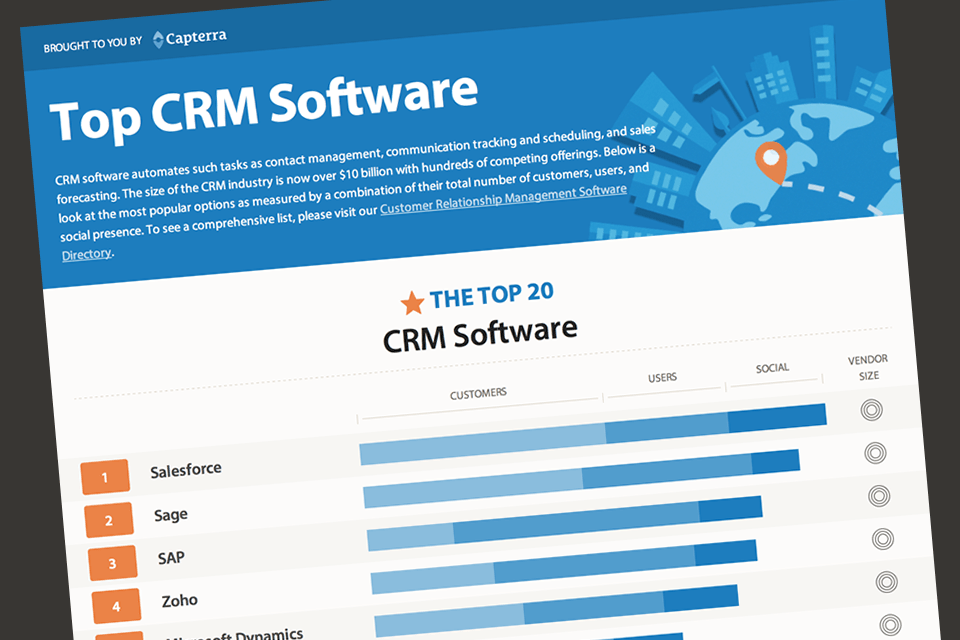Embark on a journey into the realm of crm best, where we unveil the secrets to building enduring customer relationships. From defining key principles to exploring successful implementations, this guide equips you with the knowledge and insights to harness the transformative power of CRM.
Delving deeper, we dissect the essential features and functionality of CRM systems, empowering you to make informed decisions when selecting the ideal solution for your organization. Discover the art of seamless integration and effective data management, ensuring that your CRM serves as a central hub for all customer-related information.
CRM Features and Functionality

Customer relationship management (CRM) systems are software applications that help businesses manage their relationships with customers. CRM systems can be used to track customer interactions, manage sales leads, and provide customer support. They can also be used to automate marketing campaigns and generate reports on customer behavior.
Types of CRM Systems
There are many different types of CRM systems available, each with its own unique set of features and functionality. Some of the most common types of CRM systems include:
- Operational CRM: This type of CRM system is designed to help businesses manage their day-to-day operations. Operational CRM systems can be used to track customer interactions, manage sales leads, and provide customer support.
- Analytical CRM: This type of CRM system is designed to help businesses analyze customer data. Analytical CRM systems can be used to generate reports on customer behavior, identify trends, and predict future customer needs.
- Collaborative CRM: This type of CRM system is designed to help businesses collaborate with their customers. Collaborative CRM systems can be used to create online communities, provide customer self-service, and manage customer feedback.
Key Features of CRM Systems
When choosing a CRM system, it is important to consider the following key features:
- Customer data management: The CRM system should be able to store and manage customer data, including contact information, purchase history, and support interactions.
- Sales force automation: The CRM system should be able to automate sales processes, such as lead generation, lead qualification, and opportunity management.
- Marketing automation: The CRM system should be able to automate marketing campaigns, such as email marketing, social media marketing, and search engine marketing.
- Customer support: The CRM system should be able to provide customer support, such as phone support, email support, and live chat support.
- Reporting and analytics: The CRM system should be able to generate reports on customer behavior, identify trends, and predict future customer needs.
CRM Integration and Data Management: Crm Best
Effective customer relationship management (CRM) requires seamless integration with other business systems, such as marketing automation, e-commerce platforms, and enterprise resource planning (ERP) solutions. This integration enables data sharing and streamlined processes, providing a comprehensive view of customer interactions across channels.
Data management in CRM systems presents challenges related to data quality, consistency, and accessibility. Best practices include establishing data governance policies, implementing data cleansing and enrichment tools, and utilizing data analytics to identify and resolve data issues.
Successful CRM Integrations
- Integrating CRM with marketing automation to automate lead generation, nurturing, and campaign management.
- Connecting CRM to e-commerce platforms to track customer purchases, preferences, and order history.
- Synchronizing CRM with ERP systems to streamline order processing, inventory management, and financial reporting.
Data Management Strategies, Crm best
- Implementing data governance policies to define data standards, ownership, and access rights.
- Using data cleansing tools to identify and correct data errors, inconsistencies, and duplicates.
- Employing data enrichment techniques to enhance data with additional information from external sources.
- Leveraging data analytics to monitor data quality, identify trends, and improve data management practices.
CRM Analytics and Reporting
CRM analytics and reporting provide businesses with valuable insights into their customer relationships. These capabilities enable companies to track key metrics, identify trends, and make informed decisions to improve customer engagement and satisfaction.
Types of Analytics and Reporting Capabilities
- Customer Segmentation:Dividing customers into distinct groups based on shared characteristics, such as demographics, purchase history, or behavior.
- Customer Lifetime Value (CLTV):Estimating the total revenue a customer is expected to generate over their lifetime.
- Campaign Performance:Tracking the effectiveness of marketing campaigns, including metrics like open rates, click-through rates, and conversions.
- Sales Pipeline Analysis:Monitoring the progress of sales opportunities through the sales pipeline, identifying bottlenecks and optimizing the sales process.
- Customer Support Analysis:Measuring the performance of customer support teams, including metrics like average response time, resolution rates, and customer satisfaction.
Benefits of CRM Analytics
CRM analytics provide numerous benefits to businesses, including:
- Improved Customer Relationships:By understanding customer behavior and preferences, businesses can tailor their interactions to build stronger relationships.
- Increased Sales:Analytics help identify opportunities for cross-selling, upselling, and personalized marketing campaigns.
- Enhanced Customer Service:Analytics provide insights into customer issues, enabling businesses to improve their support processes and resolve problems more effectively.
- Optimized Marketing Campaigns:Analytics help businesses track the effectiveness of marketing campaigns and make data-driven decisions to improve their ROI.
- Informed Decision-Making:Analytics provide a data-driven foundation for making strategic decisions about product development, pricing, and customer service.
Examples of CRM Analytics in Action
Here are a few examples of how businesses use CRM analytics to drive decision-making:
- A retail companyused CRM analytics to segment its customers based on purchase history and identify high-value customers. They then targeted these customers with personalized marketing campaigns, resulting in a 15% increase in sales.
- A software companyused CRM analytics to track the progress of sales opportunities through the pipeline. They identified a bottleneck in the closing stage and implemented a new training program for sales reps, leading to a 20% increase in closed deals.
- A financial services companyused CRM analytics to analyze customer support data. They identified a high volume of calls related to a specific product feature. The company then released a software update to address the issue, reducing support calls by 30%.
CRM Implementation and Adoption

Successful CRM implementation requires a structured approach and careful planning. Here are the key steps involved:
- Planning and Preparation:Define clear goals, identify stakeholders, and gather requirements.
- Solution Selection:Evaluate different CRM solutions and choose the one that best aligns with your needs.
- Data Migration and Integration:Import existing data and establish integrations with other systems.
- Customization and Configuration:Tailor the CRM to your specific business processes and workflows.
- User Training and Adoption:Train users on the new system and support them throughout the adoption process.
- Deployment and Monitoring:Implement the CRM and continuously monitor its performance and user feedback.
Importance of User Adoption and Change Management
User adoption is crucial for the success of any CRM implementation. It ensures that users are engaged with the system and derive value from it. Change management plays a key role in preparing users for the transition and minimizing resistance to change.
- Communication and Transparency:Keep users informed about the implementation process and its benefits.
- Training and Support:Provide comprehensive training and ongoing support to users.
- Involve Users in the Process:Seek feedback and involve users in the design and implementation phases.
- Address Resistance to Change:Identify and address potential resistance to change through open communication and support.
Tips for Overcoming Common Challenges
CRM implementation can present various challenges. Here are some tips for overcoming them:
- Lack of Executive Support:Secure buy-in from leadership and ensure they understand the value of the CRM.
- Data Quality Issues:Clean and validate data before migrating it to the CRM to avoid data integrity problems.
- User Resistance to Change:Address resistance through effective change management strategies and user engagement.
- Budget and Resource Constraints:Plan for the costs of implementation and ongoing maintenance, and allocate resources accordingly.
- Lack of Integration with Other Systems:Ensure that the CRM integrates seamlessly with other essential business systems.
CRM Trends and Innovations

The CRM industry is constantly evolving, with new trends and innovations emerging all the time. These trends are shaping the future of CRM, and businesses that are able to leverage them will be well-positioned to succeed in the years to come.
One of the most important trends in CRM is the rise of artificial intelligence (AI). AI-powered CRM systems can automate a variety of tasks, such as lead scoring, customer segmentation, and predictive analytics. This can free up sales and marketing teams to focus on more strategic initiatives.
Another major trend in CRM is the adoption of cloud-based systems. Cloud-based CRM systems are more flexible and scalable than on-premises systems, and they can be accessed from anywhere with an internet connection. This makes them ideal for businesses that have remote teams or that operate in multiple locations.
Finally, there is a growing trend towards the integration of CRM systems with other business applications. This can help businesses to get a complete view of their customers and to streamline their operations.
Examples of Companies Leveraging Innovative CRM Technologies
- Salesforce:Salesforce is a leading provider of cloud-based CRM software. Salesforce’s CRM system is used by over 150,000 businesses worldwide, including Amazon, Google, and Nike.
- Microsoft Dynamics 365:Microsoft Dynamics 365 is a suite of business applications that includes CRM, ERP, and business intelligence tools. Microsoft Dynamics 365 is used by over 400,000 businesses worldwide, including Coca-Cola, General Electric, and Unilever.
- Oracle Siebel CRM:Oracle Siebel CRM is a leading provider of on-premises CRM software. Oracle Siebel CRM is used by over 4,000 businesses worldwide, including AT&T, Verizon, and Walmart.
Closing Summary
As we conclude our exploration of crm best, remember that the true value of CRM lies in its ability to transform customer interactions. By embracing best practices, leveraging data-driven insights, and fostering user adoption, you can unlock the full potential of this powerful tool.
May this guide serve as your compass, guiding you towards enhanced customer relationships and business success.
